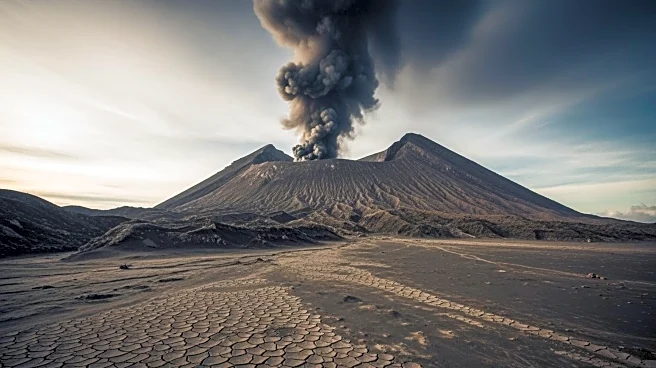What's Happening?
The Taftan volcano in eastern Iran, long considered dormant, has shown signs of activity for the first time in 700,000 years. Satellite imagery from the European Space Agency's Sentinel-1 satellite has revealed
a 3.5-inch rise in the volcano's summit over a ten-month period from July 2023 to May 2024. This subtle yet significant change suggests that the volcano is not extinct and may be reactivating. The research, led by volcanologist Pablo González from Spain's Institute of Natural Products and Agrobiology, indicates that the movement is due to pressure building within the volcano's hydrothermal system, possibly from gases or a small bubble of magma. The findings have been published in Geophysical Research Letters.
Why It's Important?
The reactivation of the Taftan volcano poses potential risks to nearby communities, including Khash in Iran and the border town of Taftan in Pakistan. If the volcano erupts, it could lead to ashfall, poor air quality, and water contamination, affecting local agriculture and infrastructure. The study highlights the importance of monitoring volcanic activity, especially in regions lacking ground-based surveillance. The use of satellite technology has proven crucial in detecting these changes, offering a means to provide early warnings and mitigate potential hazards. This development also challenges the assumption that certain volcanoes are extinct, emphasizing the need for continuous observation.
What's Next?
While there is no immediate threat of eruption, the study calls for increased investment in regional monitoring systems to better understand and prepare for potential volcanic activity. Local authorities are encouraged to establish surveillance networks to track changes in the volcano's behavior. The ongoing research aims to refine predictive models for volcanic activity, which could enhance global efforts to monitor and respond to similar geological phenomena. The findings also contribute to broader scientific understanding of geothermal systems and their potential for clean energy generation.
Beyond the Headlines
The Taftan volcano's activity serves as a reminder of the dynamic nature of Earth's geological systems. The research underscores the importance of satellite technology in observing remote and hazardous areas, providing insights into the inner workings of the planet. This case also highlights the potential for previously considered extinct volcanoes to become active, prompting a reevaluation of volcanic risk assessments worldwide. The study's implications extend to understanding earthquake dynamics and mountain formation, offering valuable data for future scientific exploration.












